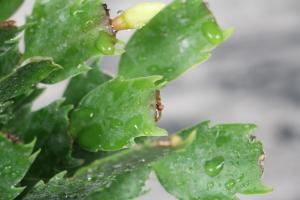Why not to plant tomatoes near pole beans
When planning a vegetable garden, certain plants may seem like natural companions. One common pairing is tomatoes and pole beans. Tomatoes and pole beans are both popular garden crops and can be grown vertically to maximize space. However, there are some reasons why it's not a good idea to plant these two crops near each other.
Nutrient Competition
Tomatoes and pole beans are both heavy feeders and require a lot of nutrients to grow and produce a good harvest. When planted together, they will compete for nutrients, especially the essential macronutrients like nitrogen, potassium, and phosphorus. This can result in reduced growth, lower yields, and smaller fruit.
Moreover, pole beans are legumes that fix nitrogen in the soil, which means they have a unique ability to convert atmospheric nitrogen into a form that plants can use. However, this process only benefits other plants that use the same type of nitrogen. Tomatoes require a different form of nitrogen, so even though pole beans may enrich the soil, they won't provide the specific nutrients that tomatoes need.
Disease transmission
Tomatoes and pole beans are also susceptible to several common diseases, such as early blight, powdery mildew, and bacterial leaf spot. When planted close together, these diseases can spread rapidly, affecting both crops and reducing the overall yield.
Furthermore, certain pests like spider mites and whiteflies can infest both tomatoes and pole beans, and planting them together can create an ideal environment for these insects to thrive.
Maintenance challenges
Another issue with planting tomatoes and pole beans together is that they require different maintenance practices. Tomatoes need regular pruning and support to grow upright, while pole beans need sturdy poles or trellises to climb on.
If planted together, the poles and trellises can interfere with each other, making it difficult to maintain or harvest either crop. Tomato plants can also shade out the pole beans, reducing their access to sunlight and limiting their growth potential.
What to plant instead
While tomatoes and pole beans may not be the ideal companions, there are several other crops that can be planted together to achieve a healthy and productive garden. For example:
Tomatoes and basil: these two crops have complementary needs and can help repel pests and diseases from each other.
Tomatoes and onions: onions can deter pests like aphids and can help improve soil health with their deep root system.
Beans and cucumbers: these two crops are both vining plants that can share trellises or poles and have similar nutrient requirements.
It's also important to rotate crops every year to prevent disease buildup and replenish soil nutrients.
Conclusion
While tomatoes and pole beans may seem like a natural pairing, planting them together can result in nutrient competition, disease transmission, and maintenance challenges. It's better to choose other companion plants that have complementary needs and can help improve soil health and plant growth. By choosing the right plant combinations and practicing good garden management, you can create a bountiful and healthy vegetable garden.

 how many times do yo...
how many times do yo... how many planted tre...
how many planted tre... how many pine trees ...
how many pine trees ... how many pecan trees...
how many pecan trees... how many plants comp...
how many plants comp... how many plants can ...
how many plants can ... how many plants and ...
how many plants and ... how many pepper plan...
how many pepper plan...






























